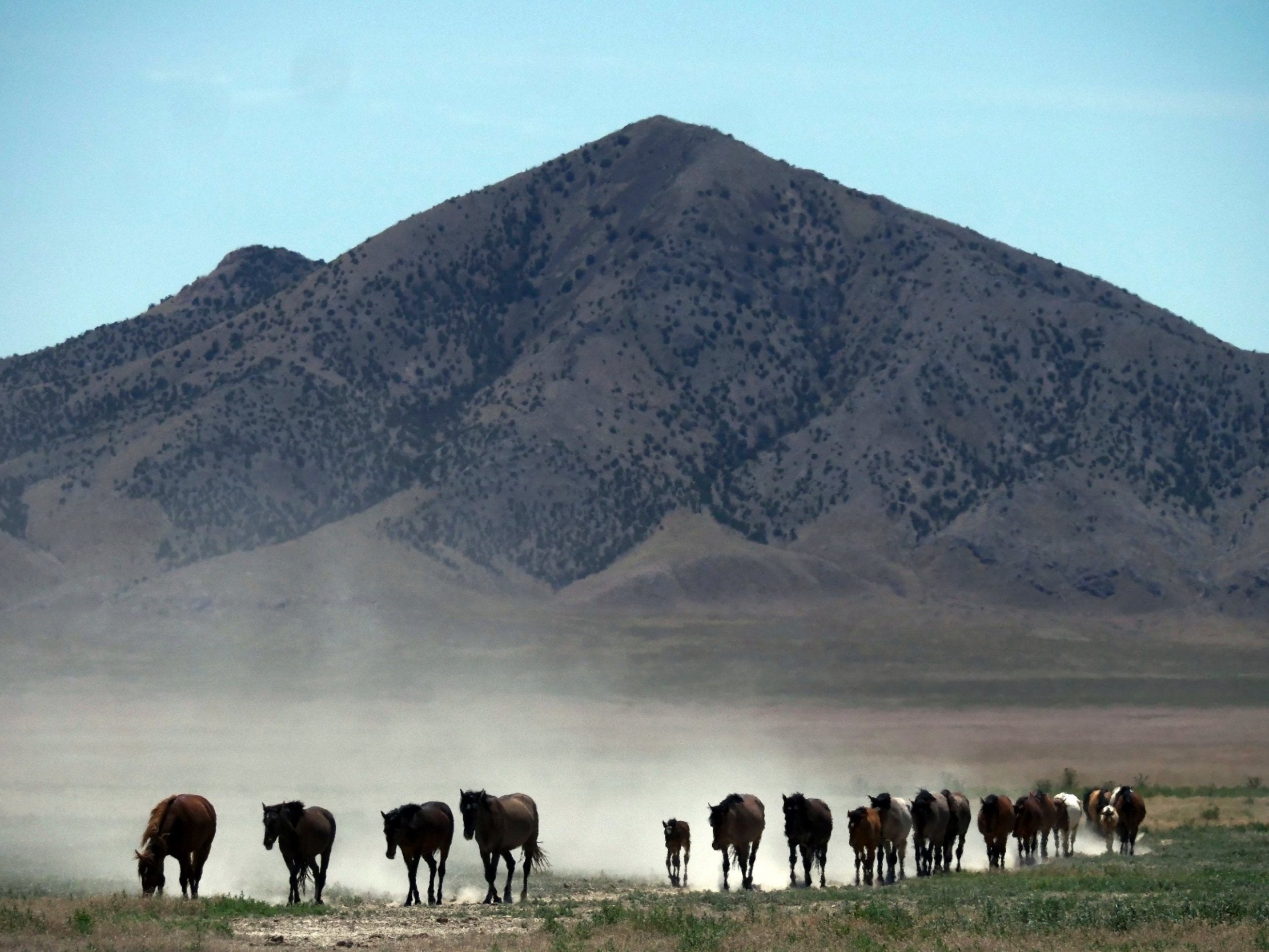Severe drought threatens wild horses in American West: ‘Every animal in the desert is dying from thirst’
Volunteer groups are bringing food and water supplies to help keep some herds alive

Your support helps us to tell the story
From reproductive rights to climate change to Big Tech, The Independent is on the ground when the story is developing. Whether it's investigating the financials of Elon Musk's pro-Trump PAC or producing our latest documentary, 'The A Word', which shines a light on the American women fighting for reproductive rights, we know how important it is to parse out the facts from the messaging.
At such a critical moment in US history, we need reporters on the ground. Your donation allows us to keep sending journalists to speak to both sides of the story.
The Independent is trusted by Americans across the entire political spectrum. And unlike many other quality news outlets, we choose not to lock Americans out of our reporting and analysis with paywalls. We believe quality journalism should be available to everyone, paid for by those who can afford it.
Your support makes all the difference.Volunteers and government officials are scrambling to protect wild horses in the American West, where the animals are facing harsh drought conditions that have already led to dozens of deaths.
In a stretch of land that includes parts of Arizona, Utah, Colorado, Nevada, and New Mexico, land managers are rushing to help the horses survive through the dry conditions that have reached an intensity in some areas that have not been seen for decades, if not centuries.
“It has never been this bad,” Simone Netherlands, the president of Arizona-based Salt River Wild Horse Management Group, told The Independent.
Ms Netherlands said that the conditions facing the wild horses in Arizona — which she described as the “icon” of the American West — first warranted intervention last year, when grass and ground cover simply did not grow for the horses to eat.
In response, her group asked for public help and was able to attain a contract with the Arizona Sate Agriculture Department to disperse food — $15,000 worth of hay each month — to strategic locations so the wild horses could survive the draught conditions, which she noted threatens all manner of wildlife, not just the horses.
“Every animal in the desert is dying from thirst,” Ms Netherlands said. “Our deserts are literally dying. It’s horrible. It’s very horrible.”
The conditions facing wild horses in Arizona are not unique, and land managers — both volunteer and those with the federal Bureau of Land Management (BLM) — have been considering how to avoid catastrophe for the roaming herds of horses all over the West.
In parts of Utah, Colorado, Arizona, and New Mexico, areas are facing the most severe category of drought classified by the government, and extreme conditions are present from California to Missouri.
Those conditions have led to efforts like the one in Arizona in many of those states.
In central Nevada, for instance, officials began emergency roundups this month to help a herd of roughly 2,100 horses that could die in the coming weeks without help. Those efforts were postponed by heavy rains, but officials plan to resume as the water won’t alleviate the problem.
“The ground’s so dry it’s not absorbing that water. It’s running off,” Jenny Lesieutre, a spokesperson with BLM told the Associated Press.
Similar efforts to those in Arizona have also been undertaken in Colorado where volunteers are planning to bring up to 5,000 gallons of water each day to the herd of horses there.
Still, in spite of these efforts, activists and volunteers acknowledge that trucking in food and water isn’t a viable long-term solution. Doing so is quite expensive, and creates an system in which the wild horses rely on humans for sustenance.
“If we don’t have a very good fall with a lot of rain — and it’s also warm so that our fall vegetation grows — we’re going to lose horses,” Cindy Wright, the co-founder of Wild Horse Warriors of Sand Wash Basin, a Colorado conservation group, said.
The Associated Press contributed to this report
Join our commenting forum
Join thought-provoking conversations, follow other Independent readers and see their replies
Comments